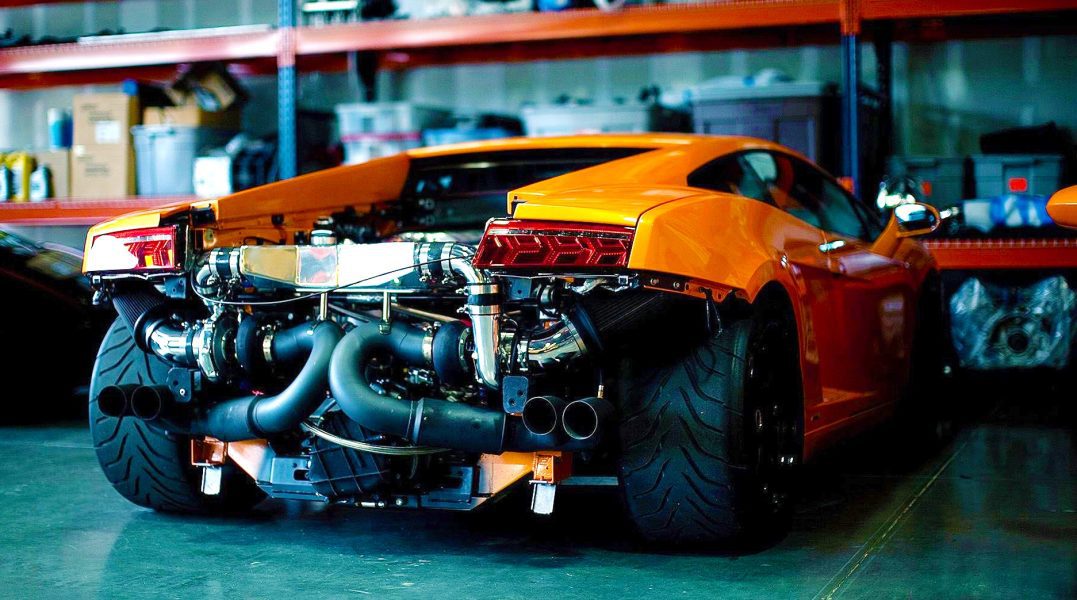
Twin Turbo system
Content
If a diesel engine is equipped with a turbine by default, then a gasoline engine can easily do without a turbocharger. Nevertheless, in the modern automotive industry, a turbocharger for a car is no longer considered exotic (in detail about what kind of mechanism it is and how it works, it is described in another article).
In the description of some new car models, such a thing as biturbo or twin turbo is mentioned. Let's consider what kind of system it is, how it works, how the compressors can be connected in it. At the end of the review, we will discuss the pros and cons of a twin turbo.
What is Twin Turbo?
Let's start with the terminology. The phrase biturbo will always mean that, firstly, this is a turbocharged type of engine, and secondly, the scheme of forced air injection into the cylinders will include two turbines. The difference between biturbo and twin-turbo is that in the first case two different turbines are used, and in the second they are the same. Why - we'll figure it out a little later.
The desire to achieve superiority in racing has led automakers to look for ways to improve the performance of a standard internal combustion engine without drastic interventions in its design. And the most effective solution was the introduction of an additional air blower, due to which more volume enters the cylinders, and the efficiency of the unit increases.
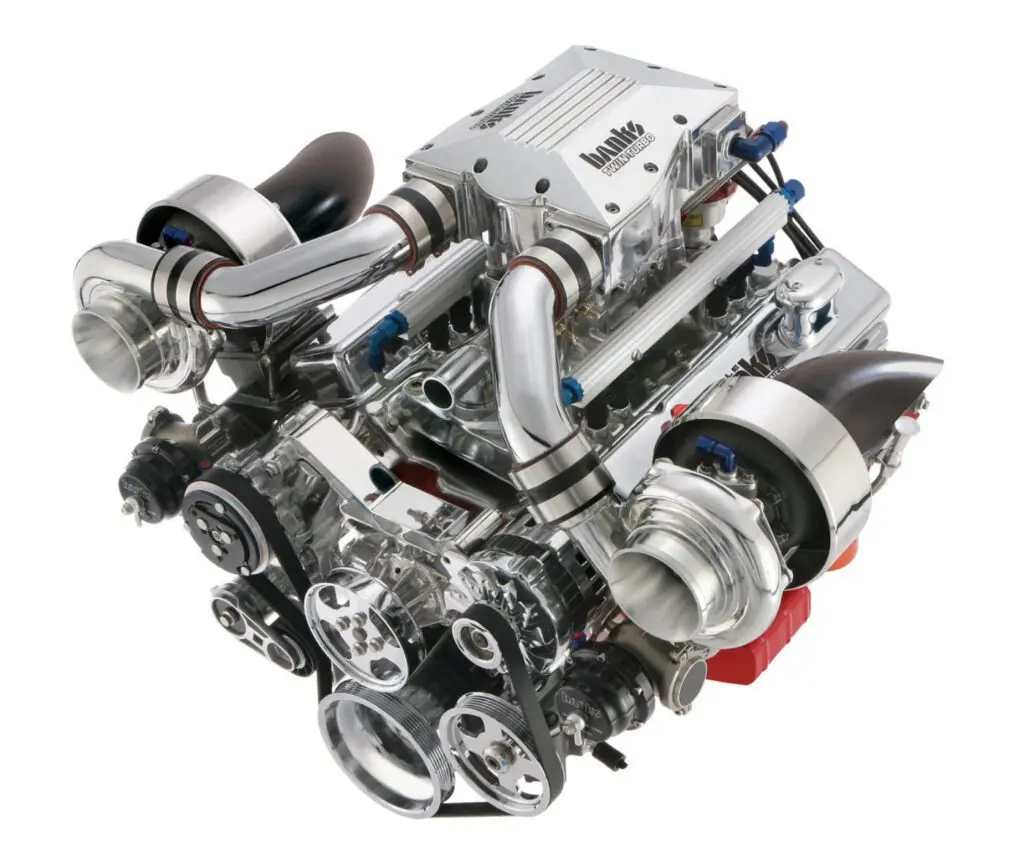
Those who have driven a car with a turbine engine at least once in their life noticed that until the engine spins up to a certain speed, the dynamics of such a car is sluggish, to put it mildly. But as soon as the turbo starts to work, the responsiveness of the engine increases, as if nitrous oxide has entered the cylinders.
The inertia of such installations prompted engineers to think about creating another modification of the turbines. Initially, the purpose of these mechanisms was precisely to eliminate this negative effect, which affected the efficiency of the intake system (read more about it in another review).
Over time, turbocharging began to be used in order to reduce fuel consumption, but at the same time increase the performance of the internal combustion engine. The installation allows you to expand the torque range. The classic turbine increases the speed of the air flow. Due to this, a larger volume enters the cylinder than that of the aspirated, and the amount of fuel does not change.
Due to this process, the compression increases, which is one of the key parameters affecting the motor power (for how to measure it, read here). Over time, car tuning enthusiasts were no longer satisfied with the factory equipment, so sports car modernization companies began to use different mechanisms that inject air into the cylinders. Thanks to the introduction of an additional pressurization system, the specialists managed to expand the potential of the motors.
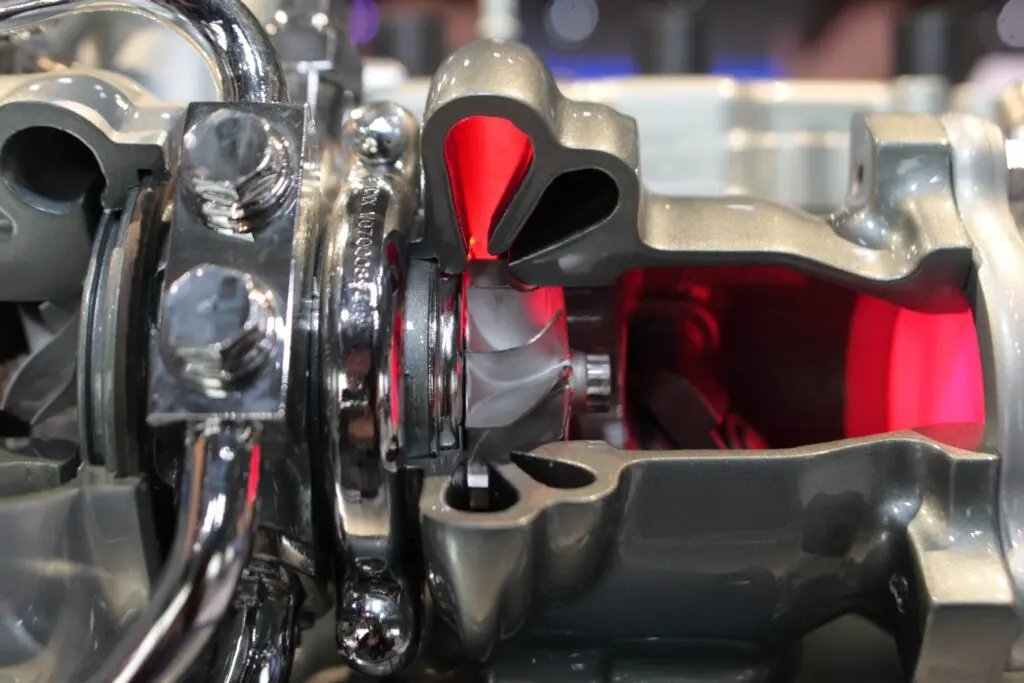
As a further evolution of the turbo for motors, the Twin Turbo system appeared. Compared to a classic turbine, this installation allows you to remove even more power from the internal combustion engine, and for auto-tuning enthusiasts it provides additional potential for upgrading their vehicle.
How does Twin Turbo work?
A conventional naturally aspirated engine works on the principle of drawing in fresh air by means of a vacuum created by pistons in the intake tract. As the flow moves along the path, a small amount of gasoline enters it (in the case of a gasoline internal combustion engine), if it is a carburetor car or fuel is injected due to the operation of an injector (read more about what types of forced fuel supply).
Compression in such a motor directly depends on the parameters of the connecting rods, cylinder volume, etc. As for a conventional turbine, working on the flow of exhaust gases, its impeller increases the air entering the cylinders. This increases the efficiency of the engine, since more energy is released during combustion of the air-fuel mixture and the torque is increased.
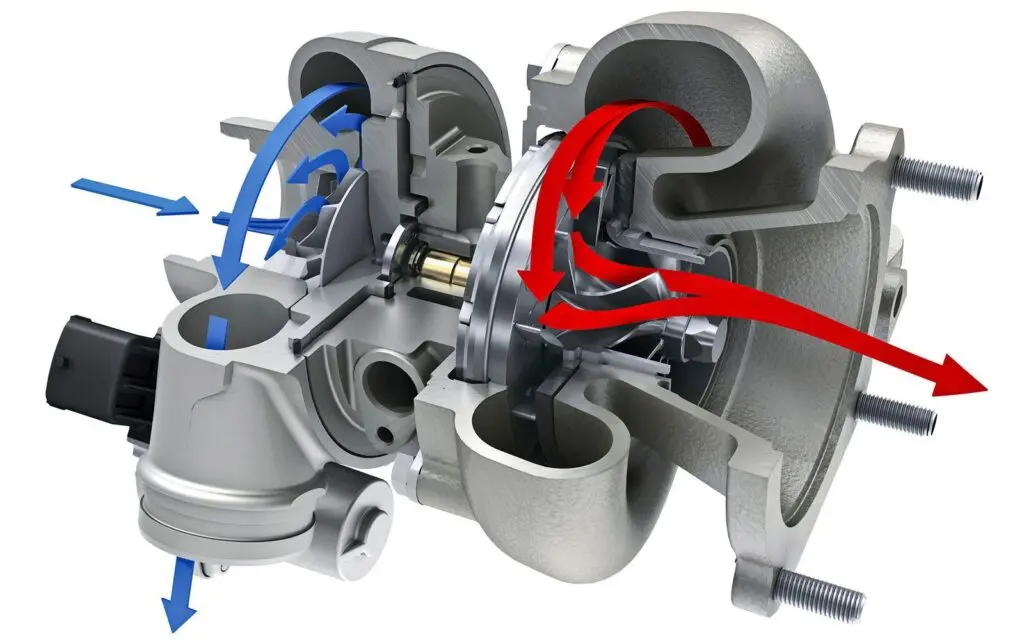
Twin turbo works in a similar way. Only in this system is the effect of the "thoughtfulness" of the motor eliminated while the turbine impeller is spinning. This is achieved by installing an additional mechanism. A small compressor accelerates the acceleration of the turbine. When the driver presses the gas pedal, such a car accelerates faster, since the engine almost instantly reacts to the driver's action.
It is worth mentioning that the second mechanism in this system can have a different design and operating principle. In a more advanced version, a smaller turbine is spun up with a less strong exhaust gas flow, which increases the incoming flow at lower speeds, and the internal combustion engine does not need to be spinned to the limit.
Such a system will work according to the following scheme. When the engine is started, while the car is stationary, the unit operates at idle speed. In the intake tract, a natural movement of fresh air is formed due to the vacuum in the cylinders. This process is facilitated by a small turbine, which starts to rotate at low speeds. This element provides a slight increase in traction.
As the crankshaft rpm rises, the exhaust becomes more intense. At this time, the smaller supercharger spins more and the excess exhaust gas flow begins to affect the main unit. With an increase in the speed of the impeller, an increased volume of air enters the intake tract due to the greater thrust.
Dual boost eliminates the harsh power shift that is present in classic diesels. At medium speed of the internal combustion engine, when the large turbine is just starting to spin, the small supercharger reaches its maximum speed. When more air enters the cylinder, the exhaust pressure builds up, driving the main supercharger. This mode eliminates the noticeable difference between the moment of the maximum engine speed and the inclusion of the turbine.
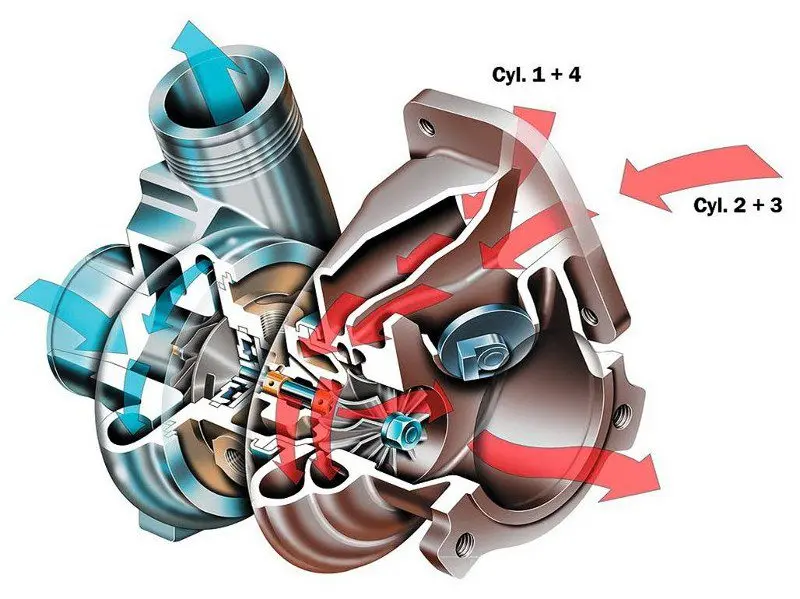
When the internal combustion engine reaches its maximum speed, the compressor also reaches the limit level. The dual boost design is designed so that the inclusion of a large supercharger prevents the smaller counterpart from overloading from overloading.
The dual automotive compressor delivers pressure in the intake system that cannot be achieved with conventional supercharging. In engines with classic turbines, there is always a turbo lag (a noticeable difference in the power of the power unit between reaching its maximum speed and turning on the turbine). Connecting a smaller compressor eliminates this effect, providing smooth motor dynamics.
In twin turbocharging, torque and power (read about the difference between these concepts in another article) of the power unit develops in a wider rpm range than that of a similar motor with one supercharger.
Types of supercharging schemes with two turbochargers
So, the theory of operation of turbochargers has proven their practicality for safely increasing the power of the power unit without changing the design of the engine itself. For this reason, engineers from different companies have developed three effective types of twin turbo. Each type of system will be arranged in its own way, and will have a slightly different principle of operation.
Today, the following type of dual turbocharging systems are installed in cars:
- Parallel;
- Consistent;
- Stepped.
Each type differs in the connection diagram of the blowers, their sizes, the moment when each of them will be put into operation, as well as the characteristics of the pressurization process. Let's consider each type of system separately.
Parallel turbine connection diagram
In most cases, a parallel type of turbocharging is used in engines with a V-shaped cylinder block design. The device of such a system is as follows. One turbine is required for each cylinder section. They have the same dimensions and also run parallel to each other.
The exhaust gases are evenly distributed in the exhaust tract and go to each turbocharger in the same quantities. These mechanisms work in the same way as in the case of an in-line engine with one turbine. The only difference is that this type of biturbo has two identical blowers, but the air from each of them is not distributed over the sections, but is constantly injected into the common tract of the intake system.
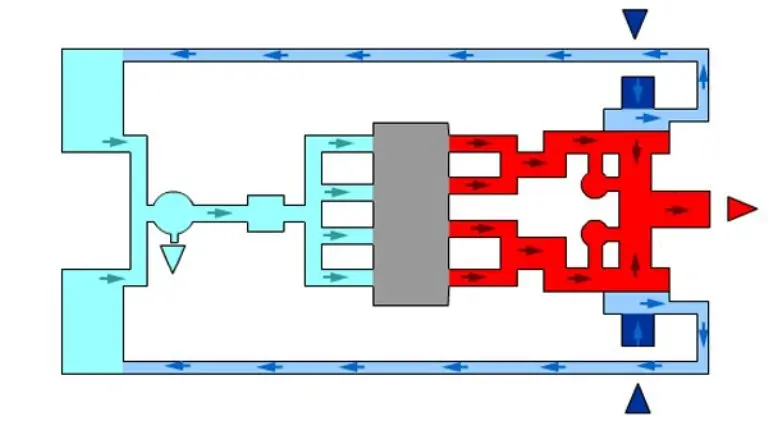
If we compare such a scheme with a single turbine system in an in-line power unit, then in this case the twin turbo design consists of two smaller turbines. This requires less energy to spin their impellers. For this reason, the superchargers are connected at a lower speed than one large turbine (less inertia).
This arrangement eliminates the formation of such a sharp turbo lag, which occurs on conventional internal combustion engines with one supercharger.
Sequential inclusion
The series Biturbo type also provides for the installation of two identical blowers. Only their work is different. The first mechanism in such a system will work on a permanent basis. The second device is connected only in a certain mode of engine operation (when its load increases or the crankshaft speed rises).
Control in such a system is provided by electronics or valves that react to the pressure of the passing stream. The ECU, in accordance with the programmed algorithms, determines at what moment to connect the second compressor. Its drive is provided without turning on the individual engine (the mechanism still operates exclusively on the pressure of the exhaust gas stream). The control unit activates the actuators of the system that controls the movement of exhaust gases. For this, electric valves are used (in simpler systems, these are ordinary valves that react to the physical force of the flowing flow), which open / close access to the second blower.
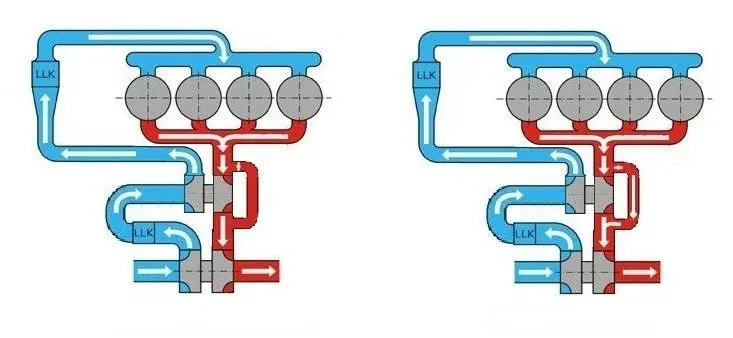
When the control unit fully opens access to the impeller of the second gear, both devices work in parallel. For this reason, this modification is also called serial-parallel. The operation of the two blowers makes it possible to arrange a greater pressure of the incoming air, since their supply impellers are connected to one inlet tract.
In this case, smaller compressors are also installed than in a conventional system. This also reduces the turbo lag effect and makes maximum torque available at lower engine speeds.
This kind of biturbo is installed on both diesel and gasoline power units. The design of the system allows you to install not even two, but three compressors connected in series to each other. An example of such a modification is the development of BMW (Triple Turbo), which was presented in 2011.
Step scheme
The staged twin-scroll system is considered the most advanced type of twin turbocharging. Despite the fact that it has existed since 2004, the two-stage type of supercharging has proven its efficiency most technically. This Twin Turbo is installed on some types of diesel engines developed by Opel. Borg Wagner Turbo Sistems' stepped supercharger counterpart is fitted to some BMW and Cummins internal combustion engines.
The turbocharger scheme consists of two different sized superchargers. They are installed sequentially. The flow of exhaust gases is controlled by electrovalves, the operation of which is electronically controlled (there are also mechanical valves that are driven by pressure). Additionally, the system is equipped with valves that change the direction of the discharge flow. This will make it possible to activate the second turbine, and turn off the first, so that it does not fail.
The system has the following principle of operation. A bypass valve is installed in the exhaust manifold, which cuts off the flow from the hose going to the main turbine. When the engine is running at low rpm, this branch is closed. As a result, the exhaust passes through a small turbine. Due to the minimum inertia, this mechanism provides an additional volume of air even at low ICE loads.
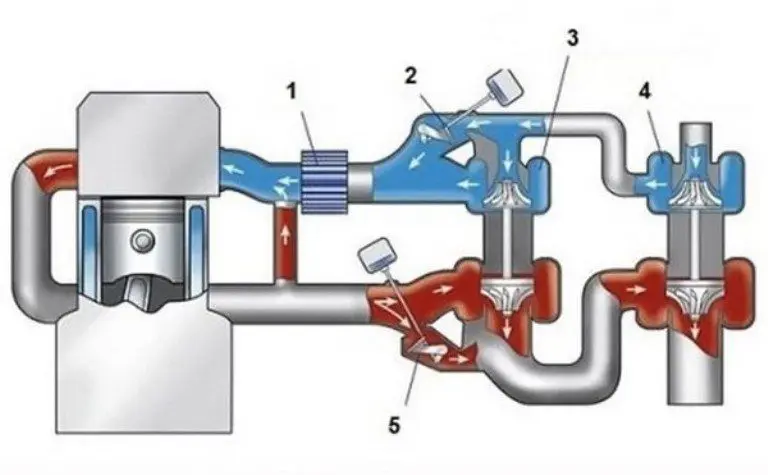
Then the flow moves through the main turbine impeller. Since its blades begin to rotate at higher pressure until the motor reaches medium speed, the second mechanism remains motionless.
There is also a bypass valve in the intake tract. At low speeds, it is closed, and the air flow goes practically without injection. As the driver ramps up the engine, the small turbine spins harder, increasing the pressure in the intake tract. This in turn increases the pressure of the exhaust gases. As the pressure in the exhaust line becomes stronger, the wastegate is slightly opened, so that the small turbine continues to rotate, and some of the flow is directed to the large blower.
Gradually, the large blower starts to rotate. As the crankshaft speed rises, this process intensifies, which makes the valve open more and the compressor spins up to a greater extent.
When the internal combustion engine reaches medium speed, the small turbine is already operating at maximum, and the main supercharger has just started spinning, but has not reached its maximum. During the operation of the first stage, the exhaust gases go through the impeller of the small mechanism (while its blades rotate in the intake system), and are removed to the catalyst through the blades of the main compressor. At this stage, air is sucked in through the impeller of the large compressor and passed through the rotating smaller gear.
At the end of the first stage, the wastegate is fully opened and the exhaust flow is already fully directed to the main boost impeller. This mechanism spins up more strongly. The bypass system is set so that the small blower is completely deactivated at this stage. The reason is that when the medium and maximum speed of a large turbine is reached, it creates such a strong head that the first stage simply prevents it from entering the cylinders properly.
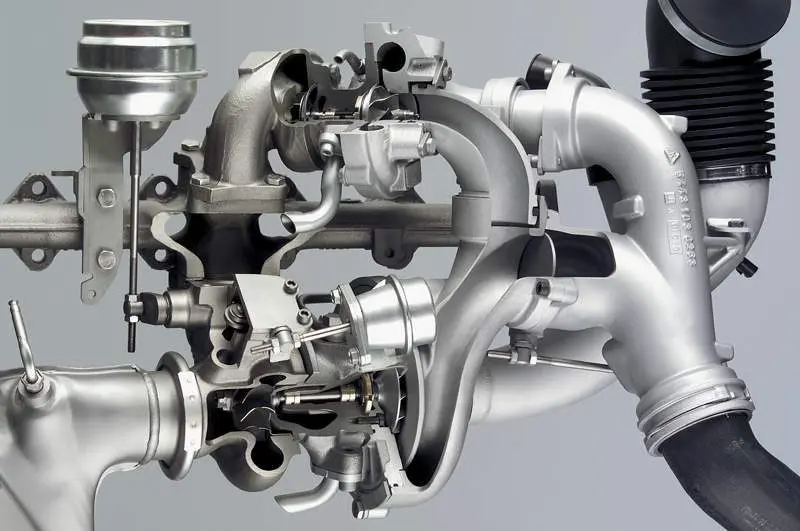
In the second stage of pressurization, the exhaust gases pass by the small impeller, and the incoming flow is directed around the small mechanism - directly into the cylinders. Thanks to this system, automakers have managed to eliminate the large difference between high torque at minimum rpm and maximum power when reaching maximum crankshaft speed. This effect has been a constant companion of any conventional supercharged diesel engine.
Pros and cons of dual turbocharging
Biturbo is rarely installed on low-power engines. Basically, this is the equipment that is relied on for powerful machines. Only in this case is it possible to take the optimum torque indicator already at lower revs. Also, the small dimensions of the internal combustion engine are not an obstacle to increasing the power of the power unit. Thanks to the twin turbocharging, decent fuel economy is achieved compared to its naturally aspirated counterpart, which develops identical power.
On the one hand, there is a benefit from equipment that stabilizes the main processes or increases their efficiency. But on the other hand, such mechanisms are not without additional disadvantages. And twin turbocharging is no exception. Such a system not only has positive aspects, but also some serious disadvantages, due to which some motorists refuse to purchase such cars.
First, consider the advantages of the system:
- The main advantage of the system is the elimination of the turbo lag, which is typical for all internal combustion engines equipped with a conventional turbine;
- The engine switches to power mode more easily;
- The difference between maximum torque and power is significantly reduced, since by increasing the air pressure in the intake system, most of the newtons remain available over a wider engine speed range;
- Reduces the fuel consumption required to achieve maximum power;
- Since the additional dynamics of the car is available at lower engine speeds, the driver does not have to spin it up so much;
- By reducing the load on the internal combustion engine, the wear of lubricants is reduced, and the cooling system does not work in an increased mode;
- Exhaust gases are not simply discharged into the atmosphere, but the energy of this process is used with benefit.
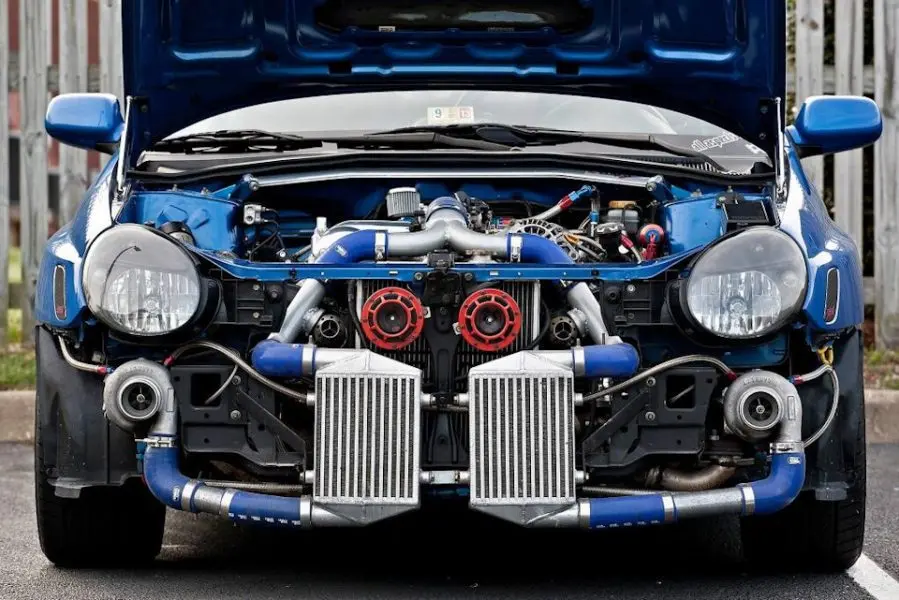
Now let's pay attention to the key disadvantages of twin turbo:
- The main disadvantage is the complexity of the design of the intake and exhaust systems. This is especially true for new system modifications;
- The same factor affects the cost and maintenance of the system - the more complex the mechanism, the more expensive its repair and adjustment;
- Another disadvantage is also associated with the complexity of the system design. Since they consist of a large number of additional parts, there are also more nodes in which breakage can occur.
Separately, mention should be made of the climate of the area in which the turbocharged machine is operated. Since the impeller of the supercharger sometimes spins up above 10 thousand rpm, it needs high-quality lubrication. When the car is left overnight, the grease goes into the sump, so most parts of the unit, including the turbine, become dry.
If you start the engine in the morning and operate it with decent loads without preliminary warming up, you can kill the supercharger. The reason is that dry friction accelerates the wear of the rubbing parts. To eliminate this problem, before bringing the engine to high revs, you need to wait a little while the oil is pumped through the entire system and reaches the most distant nodes.
In the summer you don't have to spend a lot of time on this. In this case, the oil in the sump has sufficient fluidity so that the pump can quickly pump it over. But in winter, especially in severe frosts, this factor cannot be ignored. It is better to spend a couple of minutes warming up the system than, after a short period of time, throw out a decent amount to buy a new turbine. Additionally, it should be mentioned that due to constant contact with exhaust gases, the impeller of the blowers can heat up to a thousand degrees.
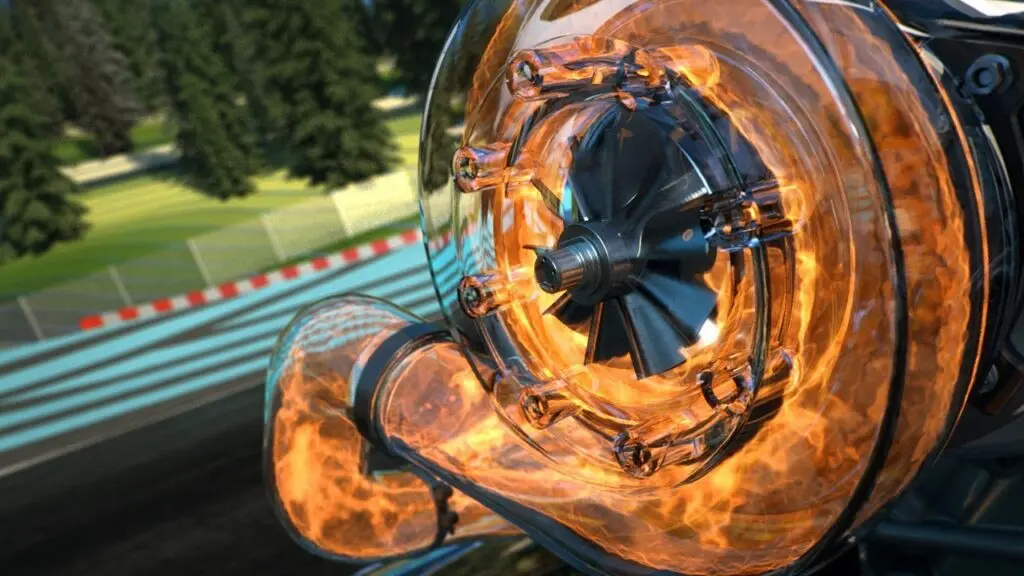
If the mechanism does not receive proper lubrication, which in parallel performs the function of cooling the device, its parts will rub against each other dry. The absence of an oil film will cause a sharp increase in the temperature of the parts, providing them with thermal expansion, and as a result, their accelerated wear.
To ensure reliable operation of the twin turbocharger, follow the same procedures as for conventional turbochargers. First, it is necessary to change the oil on time, which is used not only for lubrication, but also for cooling the turbines (about the procedure for replacing the lubricant, our website has a separate article).
Secondly, since the impellers of the blowers are in direct contact with the exhaust gases, the quality of the fuel must be high. Thanks to this, carbon deposits will not accumulate on the blades, which interferes with the free rotation of the impeller.
In conclusion, we offer a short video about different turbine modifications and their differences:
Questions and answers:
What is better bi-turbo or twin-turbo? These are engine turbocharging systems. In motors with biturbo, the turbo lag is smoothed out and the acceleration dynamics are leveled. In a twin-turbo system, these factors do not change, but the performance of the internal combustion engine increases.
What is the difference between bi-turbo and twin-turbo? Biturbo is a series-connected turbine system. Thanks to their sequential inclusion, the turbo hole is eliminated during acceleration. A twin turbo is just two turbines for increasing power.
Why do you need a twin turbo? Two turbines provide a larger volume of air into the cylinder. Due to this, the recoil is enhanced during the combustion of BTC - more air is compressed in the same cylinder.
